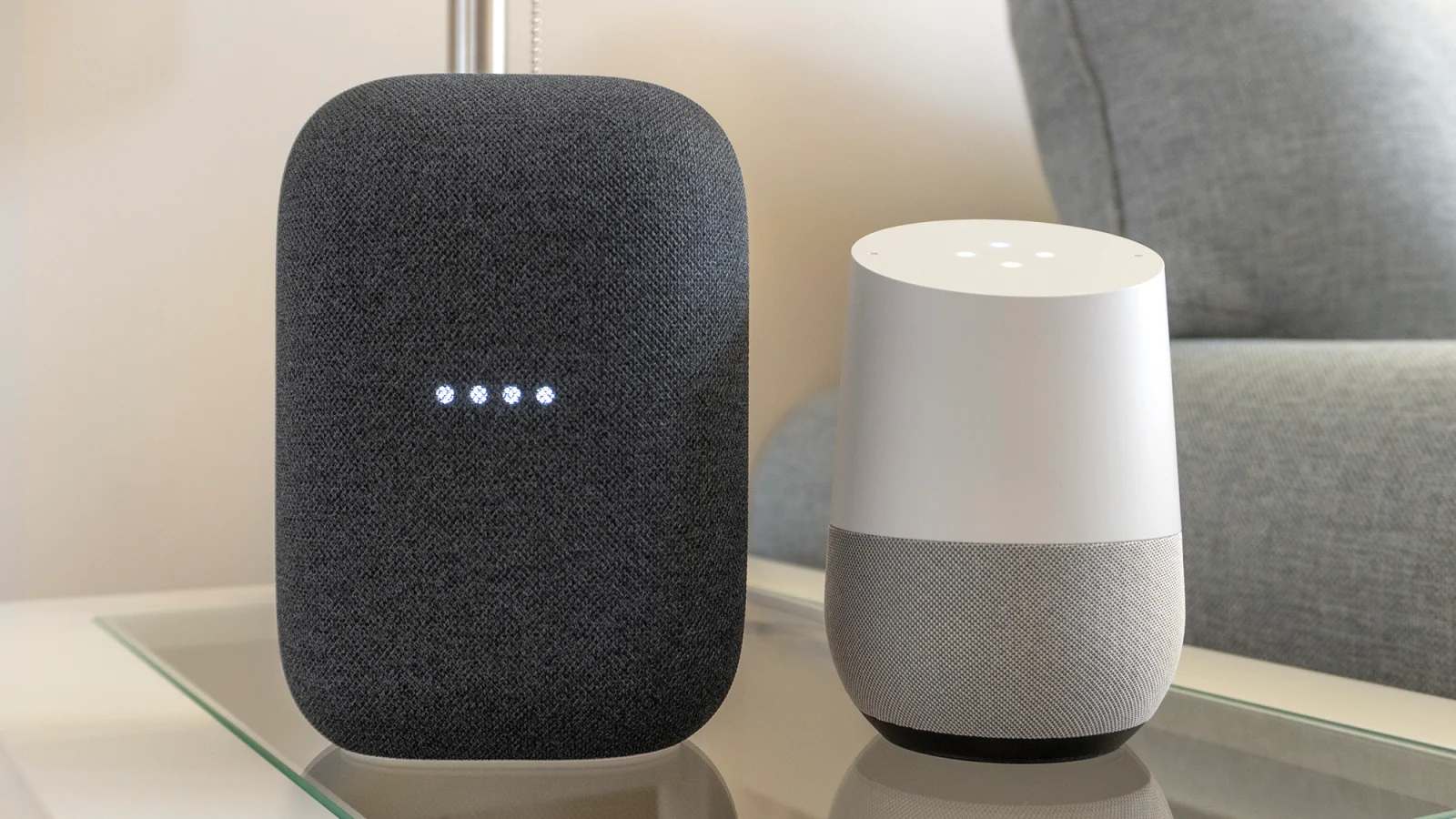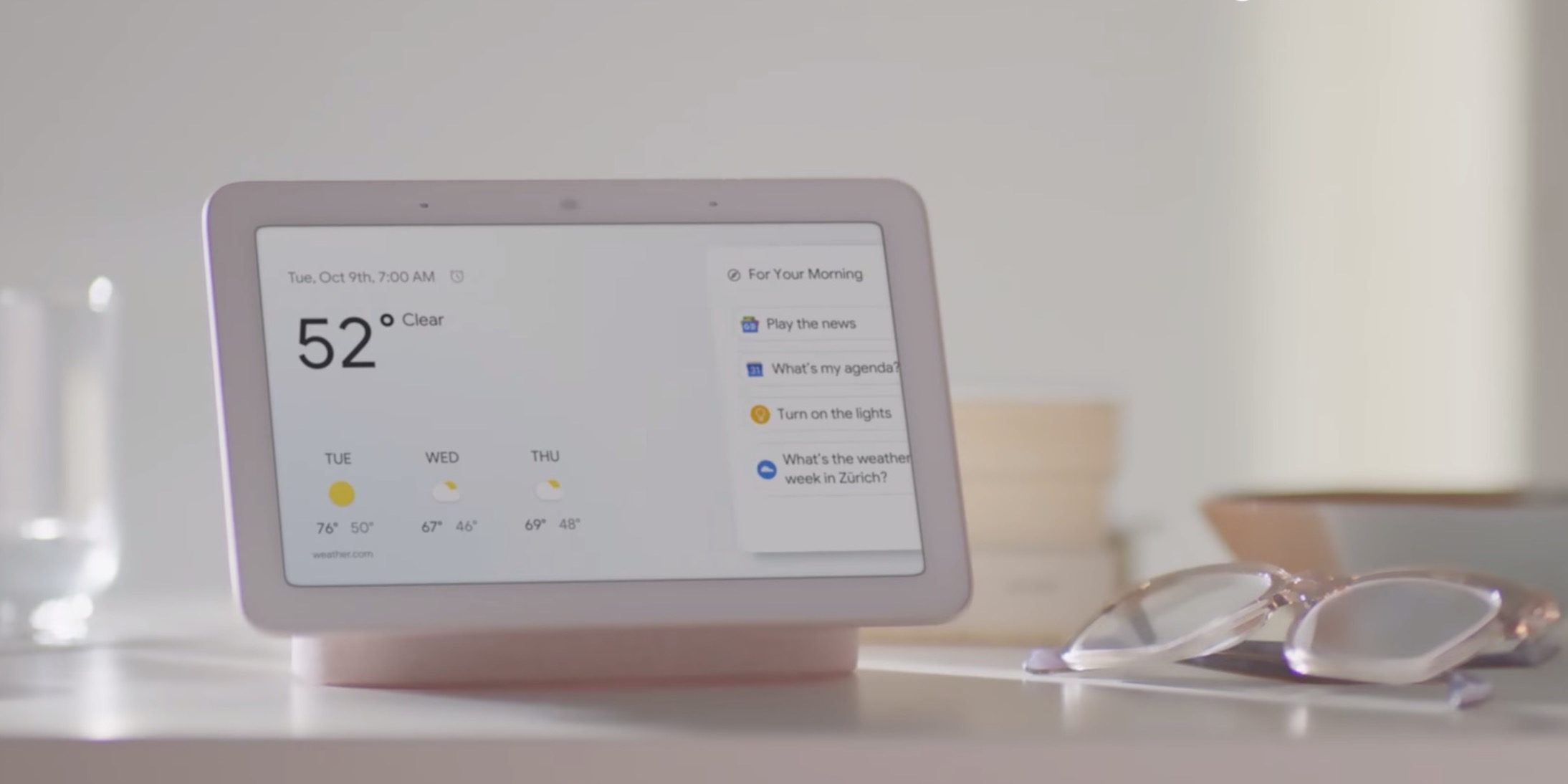Table of Content
The 360-degree speakers toss sound in all directions, and there's solid bass response. The built-in handle makes it easy to carry around, and the battery lasts more than 10 hours on a charge. It connects to your Wi-Fi network, which is how you can talk to Google Assistant, but if you leave the house with it, you can connect to it via Bluetooth through your phone to stream music. The Sonos One sounds great, but if it's in your budget to spring for the company's Arc Soundbar (9/10 WIRED Recommends), you'll really step up your sound quality a notch.

It features a 10-inch display, integrated camera , and larger speakers with a rear-facing subwoofer. Prior to its release, a "phantom input" bug was discovered, where its touch-sensitive surface—which could be tapped to activate Assistant without using a hotword command—inadvertently activated on its own, resulting in unwanted voice recording. Due to privacy concerns, Google removed the feature entirely from all units via a software update. In December 2017, Google released an update to Home Mini, allowing users to long-press the volume buttons to play and pause audio. The original Google Home model is a cylindrical speaker that is 5.62 inches tall and 3.79 inches in diameter.
Find Speakers with Google Assistant
Then, the likelihoods are fed to this neural network to perform the speaker recognition based on these input variables. In this way, the speaker identification constitutes another suitable parameter for the predetermined criterion. According to a further step 205, a speaker adaption is performed in speaker adaption component 106. If a presence of a known speaker has been determined in control component 102, the identified existing speaker model in the speaker model set is adapted using the above-described maximum a posteriori method.

The four far-field microphones can pick up a voice over the TV, so you can tell it to pause or lower the volume. It's not the only soundbar with voice-assistant capabilities, but the Arc sounds downright excellent with Dolby Atmos support, and it will receive updates for probably the next decade. A speech recognition apparatus for performing speech recognition based on the identified speaker. Method according to one of the preceding claims, wherein the detecting step is supported by a background noise model.
Features
However, if no match has been detected, a new speaker model is created by performing the MAP method on the speaker-independent universal background model. The adaption step size given by the factor α above, may be controlled depending on the reliability of the speaker recognition as determined by control component 102. In particular, the step size may be reduced if the reliability is considered to be low.
In other words, speaker change recognition will be performed by comparing a current input and one or more preceding utterances have being buffered in buffer 103. Thus, the current received speech input is considered as a speech segment, and a buffered preceding speech input is considered as another speech segment. The predetermined criterion may be based on a speaker change measure and on a speaker identification measure.
Google Home vs. Echo Dot: Which is best?
You can add items to Google Keep by adding things to the Home’s shopping list, which will also show up on Keep. Currently, however, you have no way to create a to-do list other than using Keep, nor can you ask Google to read or create email or to make a Google Voice phone call. Google Assistant uses the intelligence of Google Maps to give you an address or a distance to a location, as well as to let you know what traffic conditions are, but currently it can’t give you directions. These are all things we’re told are on Google’s own to-do list, so we expect Google Assistant to evolve over time.
The detecting step may be based on a Bayesian Information Criterion . In particular, the step of performing a speaker change recognition may be based on a Bayesian Information Criterion. This allows to determine in an effective way whether a speaker change has occurred . The predetermined criterion may be provided in different forms and may be based on additional variables or parameters.
Echo devices still work with considerably more smart-home accessories, but Google is catching up. In addition to testing the sound quality of the Home and the Echo, Brent subjected both speakers to microphone tests. He used computer-generated male and female voice commands so that they would be perfectly consistent for every test, something a live human voice can’t achieve. Other people can still use Google Home and can even set up voice profiles with their own Google accounts, but only you will have access to your information. When the feature launched, I asked a Google rep if the company was going to use voice recognition to add security features. For instance, if the Google Home knows who's talking, it could unlock your August Smart Lock, and you wouldn't have to worry about a stranger giving the same command.

The Sonos multiroom music platform offers the best-sounding speakers, supports the widest variety of streaming services, and is easy to set up and use. Google representatives replied that while no third-party software is allowed to run on the Home, all software is validated through a cryptographically verified secure-boot process before it runs on the device. If any software is tampered with, the cryptographic signature verification will prevent the software from loading and stop the Home from operating. Google also cryptographically protects all communications between the Home and Google cloud services.
Such non-speech information, for example, stemming from interacting applications or technical devices, may also be taken into account. It may further comprise segmenting a received speech input and/or a preceding speech input. The detecting step may further comprise comparing the likelihood functions for the received speech input with a predetermined threshold. Alternatively or in addition, the detecting step may comprise comparing one or more differences of likelihood functions with a predetermined threshold. In this case, if a likelihood function or a difference is below the predetermined threshold, it may be determined that the speech input does not match the corresponding speaker model. If no match with any of the speaker models is determined, it is determined that the speech input corresponds to an unknown speaker.

The creating step may comprise adapting a speaker-independent speaker model to create the speaker model. Particularly in this case, the adapting step may comprise performing a Maximum A Posteriori method. In this way, a speaker-independent speaker model provided beforehand serves as a basis for creating a speaker-dependent speaker model. The creating step may comprise adapting the speaker-independent speaker model to create a group of speaker-independent models. Such speaker-independent models may be adapted to a specific type or class of speaker . The original Google Home speaker released in November 2016 featured a cylindrical shape with colored status LEDs on top.
These different decisions and determinations may be obtained in several ways. For example, different parameters received from a different component may be combined in a predetermined way, for example, using predefined weights. Alternatively, a neural network may be provided to which these parameters are passed and which outputs the corresponding decisions and determinations. Therefore, the a posteriori probability of GMM λ1 is reduced due to the uncertainty of the given feature vector with respect to the classification into speaker or background noise. This results in a further parameter of the speaker adaptation control. The covariance matrices need not be fused as only the weights and mean vectors are adapted in the MAP algorithm.
Then, the predetermined criterion may additionally be based on the one or more determined likelihood functions for the received speech inputs. However, in the present example, the current speaker is not recognized by simply comparing the likelihood functions as indicated above. Instead, the different likelihood functions are also provided from speaker identification component 105 to control component 102 for further processing. These likelihood functions are used, together with the likelihood functions resulting from the speaker change component 104, as additional parameters. These different parameters and optionally their time history are then used to decide on whether the utterance stems from a known speaker or from an unknown speaker. For this purpose, for example, the control component may comprise a neural network.
The first device, Google Home, was released in the United States in November 2016; subsequent product releases have occurred globally since 2017. Feature vectors of a received speech input may also be buffered in buffer 103 to be used by other component during subsequent processing. The number of speech inputs or utterances for which speech vectors are buffered may be limited because of computational load requirements or privacy protection. The buffered feature vectors are used to collect enough utterances for reliable detections, for example, for speaker change recognition for which particularly one or more directly preceding utterances are employed. The method may comprise comparing a speaker model in the speaker model set before and after the adapting step according to a predetermined criterion. This comparing step may comprise determining a distance of the speaker model before and after the adapting step.

If you have multiple Google Accounts, you can choose which account you want to use. When the alarm is ringing, just say "stop" and the blaring sounds will cease—no "hey Google" needed. For a more tactile touch, thump the top of the clock to trigger snooze mode. If you're looking for the most affordable way to smarten up your home, the Nest Mini is where you should start. It's definitely worth a few bucks more than the original version, which is still available at some retailers.










